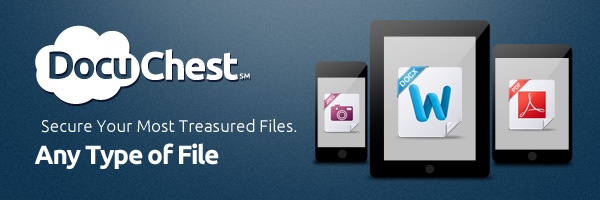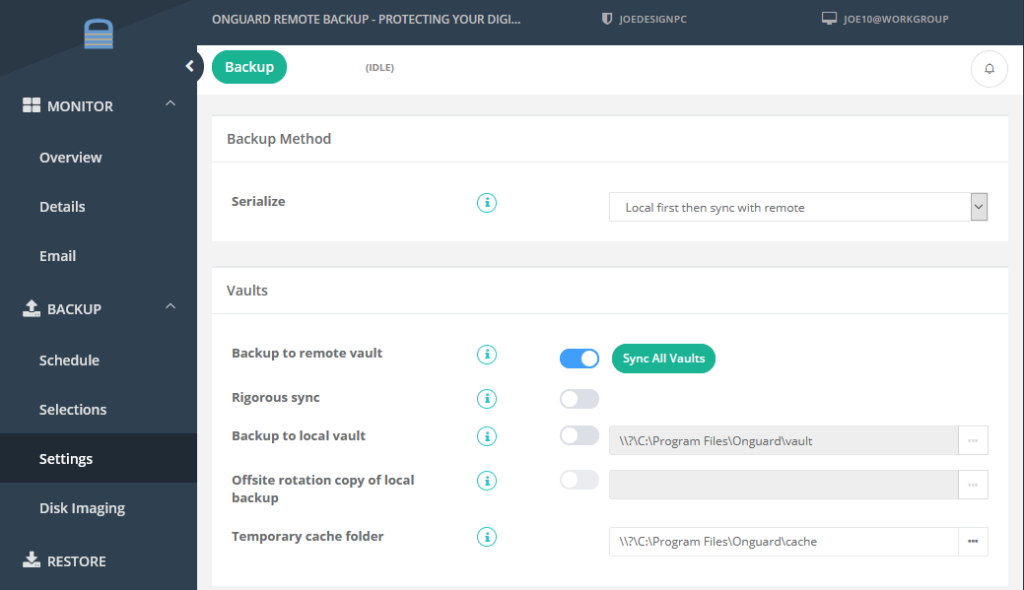
DocuChest brings all of your photos, documents, even music anywhere you are. Any file saved to your DocuChest will automatically be accessible from any computer, iPhone, iPad, android phone, Mac and even Linux systems. If your computer has a meltdown, your stuff is always safe in DocuChest. Never lose another file again. Never email yourself a file again – take your office with you – update and upload files to your DocuChest and they will be automatically synced to your pc.
The DocuChest client easily syncs your documents, music & photos – nearly anything that you would need access to. You can flip through all your photos or review that spreadsheet even while on the road. DocuChest lets you work from any mobile device or pc with the confidence that you’ll always have everything you need. DocuChest allows you to send links of specific files to your colleagues making DocuChest perfect for team projects and remote collaboration. Send only the files you want to share.
See all the features here and sign up today for your FREE account. Larger file storage and teams can sign up for our premium accounts.
[su_tabs]
[su_tab title=”Instruction Manual in HTML”]
How to use DocuChest
Logging In
You can connect to DocuChest with your web browser by following the steps listed below. When you enter the URL, you will receive a page that is similar to the one depicted:
- Open your web browser, and go to http://www.docuchest.com
- Enter your username and password into the area provided.
- Click Log In to continue.
Overview
The DocuChest main interface with essential web interface elements numbered:
The web interface comprises of the following items:
- Navigation bar: Allows navigation between different parts of DocuChest.
- Application view: This is where your content will appear.
- Upload/New button: This allows you to create new files or upload existing ones from your device. Note that you can also drop files from Explorer or Finder onto the DocuChest file view and they will get uploaded to DocuChest.
- Search/Logout: Search allows you to look for files and directories.
- Settings: This button provides access to the settings menu, where you can change your personal settings, such as the interface language or your password. You can also retrieve the WebDAV URL and show your quota.
Modifying your profile
- Select the arrow next to your username to display the profile menu
- Select Personal to modify your profile.
- Password: you can change your password. Enter your current password and your new desired password and click the change password button.
- Display Name: Enter a new display name and then click the Change Display Name Button.
- Email: enter your preferred email address to be used for password recovery.
- Language: Select your preferred language.
- WebDAV: Copy and paste this link to access your remote storage through windows explorer.
- Media: Copy and paste this link to stream music from your music library.
Uploading Music
- Select Files from the left menu.
- Click the upload button. Note that the maximum file size per upload is 800 MB
- The file upload window will appear. Browse to the location of your music file.
- Select the desired file and then click open.
- Once uploaded, you can then select the music library on the left navigation pane. Inside the music library you have the ability to stream your music right from DocuChest!
Creating a NEW text file
- Select Files from the left menu.
- Click New
- Select Text File.
- Enter a new file name.
Creating a NEW folder
- Select Files from the left menu.
- Click New
- Select Folder.
- Enter a new folder name
Managing your contacts
The contacts area of DocuChest allows you to create and manage a contacts list. You can also add additional address books in order to keep your contacts organized.
Adding contacts: There are two ways in which you can add contacts
- Add them manually
- Import a VCF file
Importing
- On the left menu, select contacts.
- In the contacts app, select the import button.
- Click the select files to import button
- Locate the folder containing your VCF files.
- Click open.
Create Contacts Manually
- On the left menu, select contacts.
- In the contacts app, select the add contact button.
- Add all your information about the contact: the name, the address, the e-mail, the telephone etc…
Managing your calendar
If you use the calendar the first time, there will be already a calendar called “Default calendar”. You can manage your calendars with a click on the “Calendar” button in the top right corner. In the dialog, which will appear, you can add, edit, export, enable, disable and delete your calendars.
Adding an appointment
Uploading Pictures
- Select Files from the left menu.
- Click the upload button. Note that the maximum file size per upload is 800 MB.
- The file upload window will appear. Browse to the location of your music file.
- Select the desired file and then click open.
- Once the upload completes, you can view your images from within the pictures library. Click pictures on the left navigation to view the pictures library.
Back to Top
[/su_tab]
[su_tab title=”Video Instructions”]
How to install DocuChest client on…
Windows
http://www.youtube.com/watch?v=6AB6KmeFnDs&feature=youtu.be
OS X
http://www.youtube.com/watch?v=3hYaEmYcnOY
iPhone
http://www.youtube.com/watch?v=pwf99-l_050&feature=youtu.be
Synchronize Local folders from a Windows PC
http://www.youtube.com/watch?v=PiX8rlzIE8c&feature=youtu.be
File Features Explored
http://www.youtube.com/watch?v=zYLX6v0FEII&feature=youtu.be
[/su_tab]
[/su_tabs]









